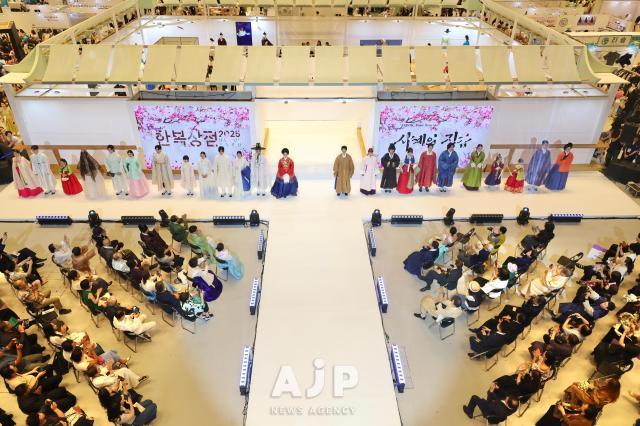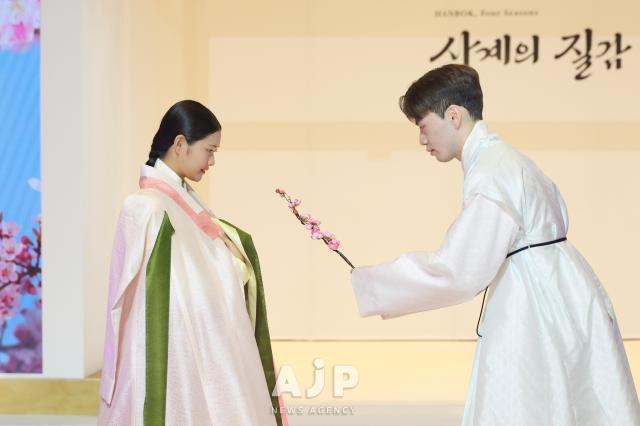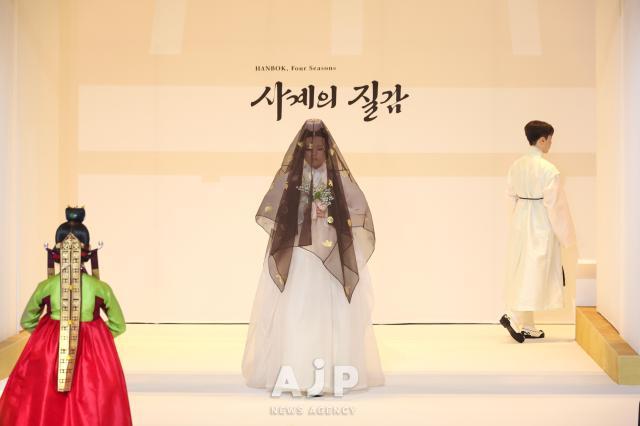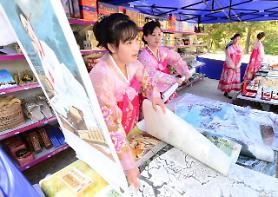

SEOUL, August 7 (AJP) - The vibrant energy of South Korea's four seasons came to life through hanbok, the country's traditional clothing. The 2025 Hanbok Expo, a four-day expo launched on Thursday at COEX in southern Seoul, featured a fashion show that highlighted the elegance of the country's traditional attire through seasonal fabrics.
Professor Shim Yeon-ok of the Korea National University of Cultural Heritage, who directed the fashion show, said that the fashion show was designed to restore the seasonal beauty embedded in South Korea's traditional fabrics.
The fashion show followed the natural cycle of spring, summer, autumn, and winter, with each section highlighting distinct fabrics, colors, and textures associated with the season. Models walked one by one along a white runway, each wearing hanbok designed to reflect the character of the season.

The Spring section featured translucent fabrics like myeongju (silk tabby), saengmyeongju (raw silk tabby), hangra (ribbed gauze), guksa, and sukgosa (patterned simple gauze). With pastel tones and light-permeable materials, the designs conveyed the freshness of spring, embodying youthful beginnings, anticipation, and excitement. While maintaining the traditional structure of hanbok, the collection used harmonious color schemes and thoughtful fabric combinations to enhance the season's refreshing ambiance.
The Summer section showcased hanbok with enhanced breathability and lightness through traditional fabrics such as mosi (ramie), sambe (hemp), eunjosa (plain gauze), saenggosa, and other munsa (patterned simple gauze), all known for their cooling properties. The garments were mostly created in light, single-layer formats, ideal for hot weather. The collection captured the freedom and vitality of summer, offering both comfort and layered beauty.

The Autumn section of the fashion show embodied abundance and tranquility, using luxurious silks like jinjusa, sukgosa, jamisa, and gapsa in deep hues such as indigo and burgundy. Reflecting the spirit of Chuseok, the country's Thanksgiving, the collection included children’s hanbok worn for festive occasions. Colorful saekdong jeogori (striped jackets), kkachi durumagi (magpie overcoats), and richly patterned textiles expressed the richness of the season. Reconstructed garments based on historical artifacts were presented in subdued tones to enhance the calm and elegant mood of autumn.
The Winter section captured the deep, serene spirit of the cold season, presenting garments that embodied both warmth and dignity. Traditional winter fabrics such as neung (twill), dan (satin), yangdan (two-colored damask on satin), and jikgeum (weaves with supplementary golden wefts) were dyed in rich seasonal tones. Additional warmth was provided through fur linings and quilted garments filled with cotton.
The finale of the fashion show featured reenactments of historical garments, including a reproduction of a Joseon-era general's bangmyeongpo and a jeogori (short jacket) excavated in Yongin's Yeongdeok-dong, Gyeonggi Province, worn by actors Jung Il-woo and Kwon Yu-ri, drawing enthusiastic applause from the crowd.
Among the visitors was Lee Seo-hyun, a woman in her twenties who traveled from Sokcho, Gangwon Province, dressed in hanbok. "I also came last year," she said. "Since then, I've continued attending hanbok-related events and even bought my first daily hanbok from a brand called Daraewon here."
Ina from Germany, who was browsing booths at the event with her baby and a friend, said, "I like to wear modern hanbok. I'd love to stay and look around longer."
Beyond the runway, the exhibition featured booths showcasing workwear, lifestyle hanbok, and accessories, modern interpretations that all draw from the enduring legacy of traditional hanbok.
Copyright ⓒ Aju Press All rights reserved.



